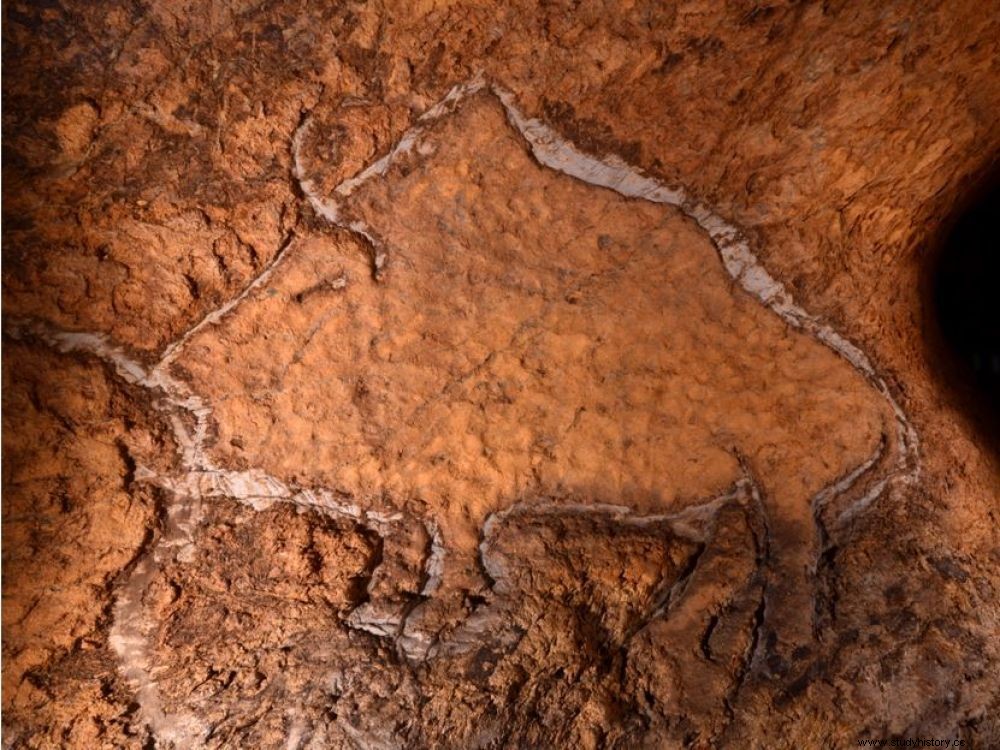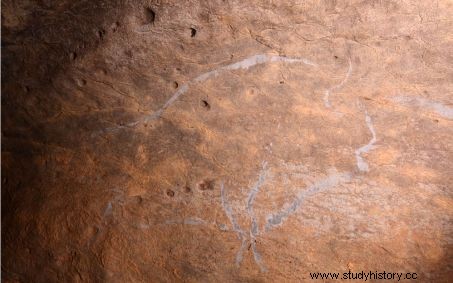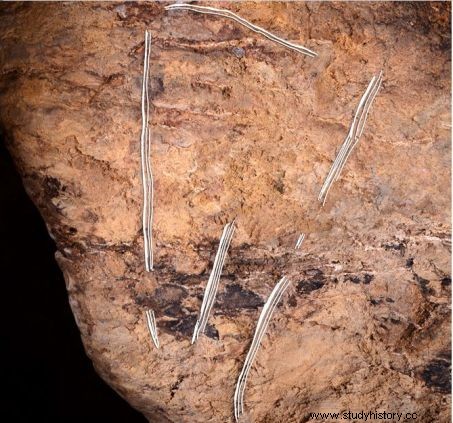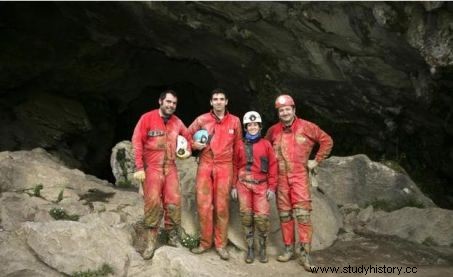Exceptional 14,000-year-old figures have been discovered in a cave in the Spanish Basque Country.

Unpublished Palaeolithic works of art discovered in the Basque Country, Spain. Among them, this bison traced in clay.
PREHISTORY. Unheard of in Spain! Some 14,000 years old, some fifteen exceptional animal figures were fortuitously discovered in the Paleolithic cave of Aitzbitarte IV, near the town of Errenteria, in the autonomous province of Gipuzkoa, in the Spanish Basque Country. Horses, bison and deer were engraved on the finger or incised with flint on clay walls. Made in early April, this discovery was not revealed until mid-July. “These are unprecedented finds for Spain and the Cantabrian region” , explains to Sciences et Avenir the Spanish prehistorian from Bilbao, Diego Garate Maidagan, also attached to the TRACES-UMR 5608 laboratory at the University of Toulouse-Le Mirail.

Bison figure from the Magdalenian period unearthed in the Aitzbitarte cave. © Diego Garate / Guipuzkoa
Present on the spot, the expert remains admiring of the modeling of these very well preserved works - according to a technique hitherto unknown in these regions - intended to restore the volumes and increase the realism. In addition to these representations, the number of which could still increase as galleries remain to be explored, there is also a handprint and two “vulvas”.

Scan of one of the "vulva" figures. © Diego Garate / Gipuzkoa
The latter are allegories of the female sex, one of which reaches more than one meter. This is a relatively abundant theme in the Magdalenian period, the last phase of the Upper Paleolithic (-17,000/-12,000 years ago) to which these prehistoric works have been linked.
“These creations were in an area of very difficult access, requiring the passage of a deep vertical shaft ”, continues Diego Garate. It is indeed to a team of speleologists that we owe this discovery, the inaccessibility being undoubtedly at the origin of their perfect “freezing” for tens of thousands of years.

The speleologists behind the discovery of the parietal art figures of Aitzbitarte © Diego Garate /Gipuzkoa
The Aitzbitarte caves, made up of a set of thirty natural cavities located in a karstic (limestone) massif, have been known and studied since 1892, but they had not revealed all their secrets. “As early as 2015, however, we had begun to encounter remains of red ocher dating from the Gravetian and Magdalenian, but nothing as unusual in the whole of the Iberian Peninsula as these figures traced in fresh clay” , says the archaeologist. It remains to organize the study of these very fragile remains, which the slightest contact could alter. The use of a drone has been mentioned.
